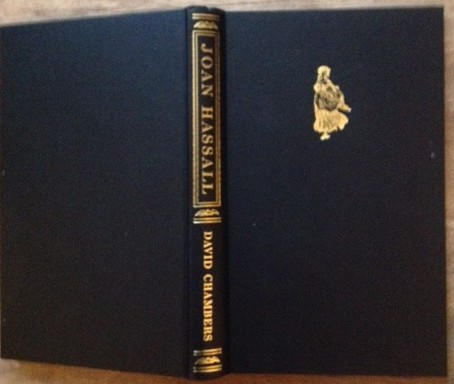Inspiring Older Readers
 posted on 02 Jan 2018
posted on 02 Jan 2018
Joan Hassall by David Chambers
Is there an illustrative art form that’s more under-rated than that of the wood engraver and printer? There’s a chance that you might have heard of the English master of the form, Thomas Bewick, or the great American artist, Rockwell Kent but beyond that I suspect most people would struggle. So, David Charles has done us all a favour by putting together this excellent overview of the work of Joan Hassall who I must confess had pretty much passed me by but who I’m now a huge fan of.
Born in 1906, Hassall was the daughter of a poster artist – her father John Hassall was responsible for the iconic tourist poster ‘Skegness: it’s so bracing’ and she spent time as a young girl helping in his studio. Creativity ran in the family because her brother Christopher was a published poet and Joan herself went to art college. But she fell into wood engraving for the purposes of printing almost by accident – in 1931 she signed up for evening classes in wood engraving at the London Central School of Photo-engraving and Lithography to help a friend who was concerned the classes weren’t attracting enough students.
It seems she took to it like a duck to water and within five years Heinemann had commissioned her to do the frontispiece for her brothers collection of poetry he called Devil’s Dyke. This was remarkable progress for someone new to what is a highly technical and complex skill and David Chambers’ book gives us some really excellent insights into what is involved in mastering the art of wood engraving. Joan Hassall herself provides a helpful and honest insight by way of a preface and George Mackley writes a section specifically dedicated to the skills needed and those that were specific to Joan’s work.
By 1940 she was taking on substantial projects and she produced a series of illustrations for Mrs Gaskell’s Cranford. During the war years she moved to Scotland to take on the role of tutor of Book Illustration and Drawing at Edinburgh College of Art and continued to build her reputation. When she returned back down south she set up her own small printing operation and started working on a range of small projects – cards, letterheads, bookplates – as well as continuing to take commissions in book illustration.
It was, however, the 1950s that saw Hassall at her most active and creative and she did work for the Oxford University Press illustrating Peter and Iona Opie’s Book of Nursery Rhyme and also providing prints for The Folio Society editions of Trollop and Jane Austen.
Having suffered money worries for most of her life and constant poor health that limited her output, Hassall was awarded an OBE in the 1970s and retired to Malham in Yorkshire. She died in 1988.
Much of Hassall’s work was done on the small scale and she very rarely did full page illustrations. She became increasingly meticulous about the production and printing of her work – sometimes turning down printers she didn’t trust to produce clear and sharp reproductions of her engravings. For my money, some of her best work was on what might be thought of as the ephemeral – I just love her letterheads, her small promotional advertisements and her bookplates because they mix the modern and the classical, the formal and informal and are little jewels of detail.
This meticulously curated archive published in 1985 by the Pinner Private Libraries Association is a brilliantly compiled collection – not showy but carefully referenced and annotated. Most importantly, we get a chance to see all the engravings whether for books or for private use and supplements them with informed and informative commentary.
You can get copies of this book on the second hand market for under £20 and if you love book illustration you’ll find this irresistible.
Terry Potter
January 2018